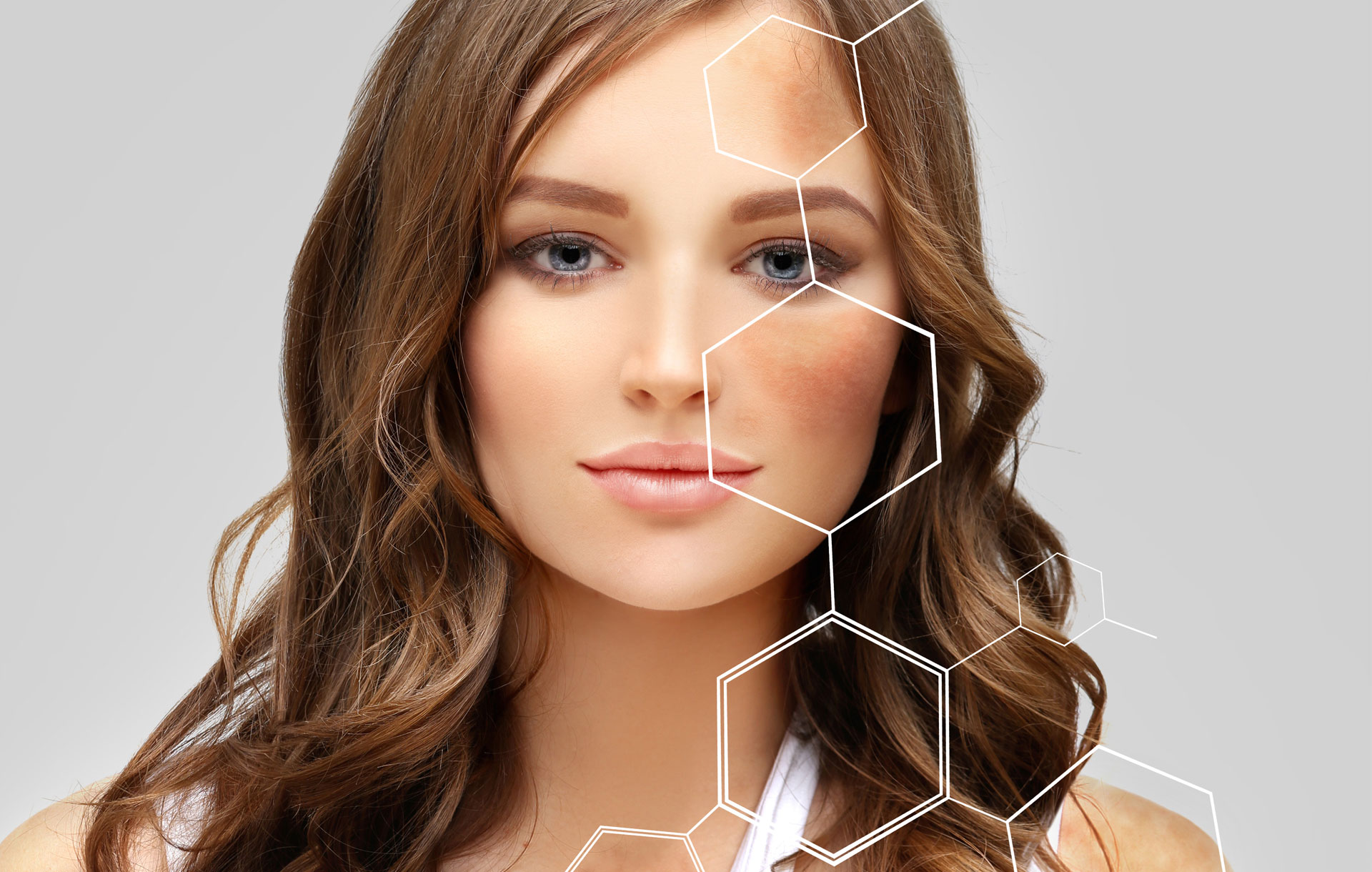
A comprehensive guide for therapists
A common skin condition seen in the treatment room is a pigmentation disorder known as melasma. Occurring often in women and in about 10% of men, melasma is characterized as dark-colored patches on the face that commonly appear in areas highly exposed to the sun.
For women struggling with melasma, the cause is typically hormone-related and/or a direct result of pregnancy. However, many internal and external factors can contribute to this condition, such as inflammation, heat, sun exposure, autoimmune disease, and certain medications, particularly oral contraceptives, which increase estrogen and progesterone levels in the body and can trigger a melanin response.
ACHIEVING THE BEST OUTCOME
Due to intrinsic factors, tackling melasma requires a thorough approach that focuses not only on professional treatments and products but also on addressing the underlying cause, the client’s lifestyle, and daily habits. Successful treatment of melasma will be based not only on the therapist’s expertise but also on strict client compliance.
[ihc-hide-content ihc_mb_type=”show” ihc_mb_who=”2,4,6,7,5″ ihc_mb_template=”3″ ]
Because pigmentation disorders can be stubborn and difficult to treat, it’s important to manage client expectations early on and be as honest as possible. While we may not be able to get rid of melasma completely, we can help improve it significantly and help our client manage it in the future.
When creating a treatment plan for clients, it’s always important to pay attention and be aware of any contraindications such as pregnancy and/or possible medical conditions that might interfere with the client’s treatment. Having insight into the underlying cause and a proper diagnosis from a physician will be extremely helpful in gaining an advantage over melasma.
A comprehensive plan should include a course of professional treatments, a proper home-care regimen, and necessary lifestyle changes.
RECOMMENDED TREATMENTS
Microdermabrasion Microdermabrasion is one of the safest methods for treating pigmentation and melasma because it doesn’t require the use of harsh chemicals. It is also one of the best options for clients who are pregnant or nursing. The goal of microdermabrasion is to stimulate cellular turnover, fade existing pigmentation, and gradually resurface the skin.
Microdermabrasion should be performed every 2-4 weeks, depending on the skin. Clients should avoid sun exposure for at least three days after the procedure.
Low-Strength Peels
When it comes to treating melasma with chemical peels, the “low and slow” method is usually more effective and will provide longer-lasting results. While it may be tempting to go for the big guns, this approach can severely compromise the skin’s barrier, create an inflammatory response, and worsen melasma symptoms. Because inflammation is a known trigger for melasma, we want to avoid over-treating the skin and causing any type of excessive trauma.
A series of low-strength professional peels performed at 2-4 week intervals that use acids such as lactic, glycolic, azelaic, mandelic, and low concentrations of TCA can offer a safer alternative. For darker skin, there’s a higher likelihood for post-inflammatory pigmentation, and it’s best to avoid TCA peels on any skin types with Fitzpatrick IV or higher.
LED Light Therapy
A wholly non-invasive and low-risk option for treating melasma is LED Light Therapy, which uses specific wavelengths of light such as red, yellow, blue, or green.
Light therapy helps to stimulate fibroblasts, optimize cellular activity, and repair damaged cells. Red light in the range of 640-660nm is shown to have a positive effect on improving most skin conditions, including pigmentation, sun-damage, and wrinkles.
Alternatively, green light with a wavelength of 525nm and yellow light of around 590nm can directly target melanocytes, break up pigment clusters, and inhibit the transfer and production of melanin. The benefits of LED light therapy have been well-studied and documented with very little known side-effects.
A 15-20 minute LED session is recommended at least once a week to achieve positive results. Keeping in mind that a small amount of infrared energy is emitted with LED light, shorter but more frequent sessions can prevent adverse reactions.
When combined with other methods, LED light can significantly boost the effectiveness of other treatments, which makes it one of the most powerful tools for estheticians.
Combining Treatments
Combining or alternating treatments such as microdermabrasion, lowstrength peels, and LED light therapy can make a big difference in successfully improving melasma. Switching up treatments allows the skin to tap into its full healing potential in a similar way that the body responds to different types of exercise. It’s generally recommended to alternate treatments every 2-4 weeks or combine them when appropriate.
INGREDIENTS AND PROTOCOLS
Treating melasma topically will require a combination of ingredients that work in synergy together to brighten the skin and fade pigmentation. Your client’s home-care regimen should include ingredients that act as tyrosinase-inhibitors. Kojic acid, malic acid, lactic acid, azelaic acid, l-ascorbic acid, arbutin, licorice root, and retinol are all effective at treating pigmentation. They help to disrupt tyrosinase enzyme activity at different stages of melanin synthesis.
Another excellent skin brightener is niacinamide, which works by blocking the transfer of melanin, thus preventing pigmentation from reaching the surface. Protecting the skin with antioxidants like Vitamin A, C, and E and strengthening the barrier will be equally important in reducing inflammation and preventing free-radical damage.
LIFESTYLE CHANGES
Limiting sun exposure, avoiding excessive heat, and wearing a broad-spectrum physical sunscreen of at least SPF 30 year-round will be a necessary way of life for clients looking to improve their melasma symptoms.
Proper nutrition will also play a key role in maintaining the health of the skin. Processed foods, sugar, gluten, and dairy are known to cause inflammation in the body, and it may be necessary for clients to switch to a more plant-based anti-inflammatory diet.
Last but not least, it’s essential to educate the client on what triggers to avoid and how to best manage melasma moving forward. If the skin responds poorly to treatment, a comprehensive medical evaluation to address the root cause will be crucial to making any long-term progress and ultimately winning the fight against melasma.
[/ihc-hide-content]












